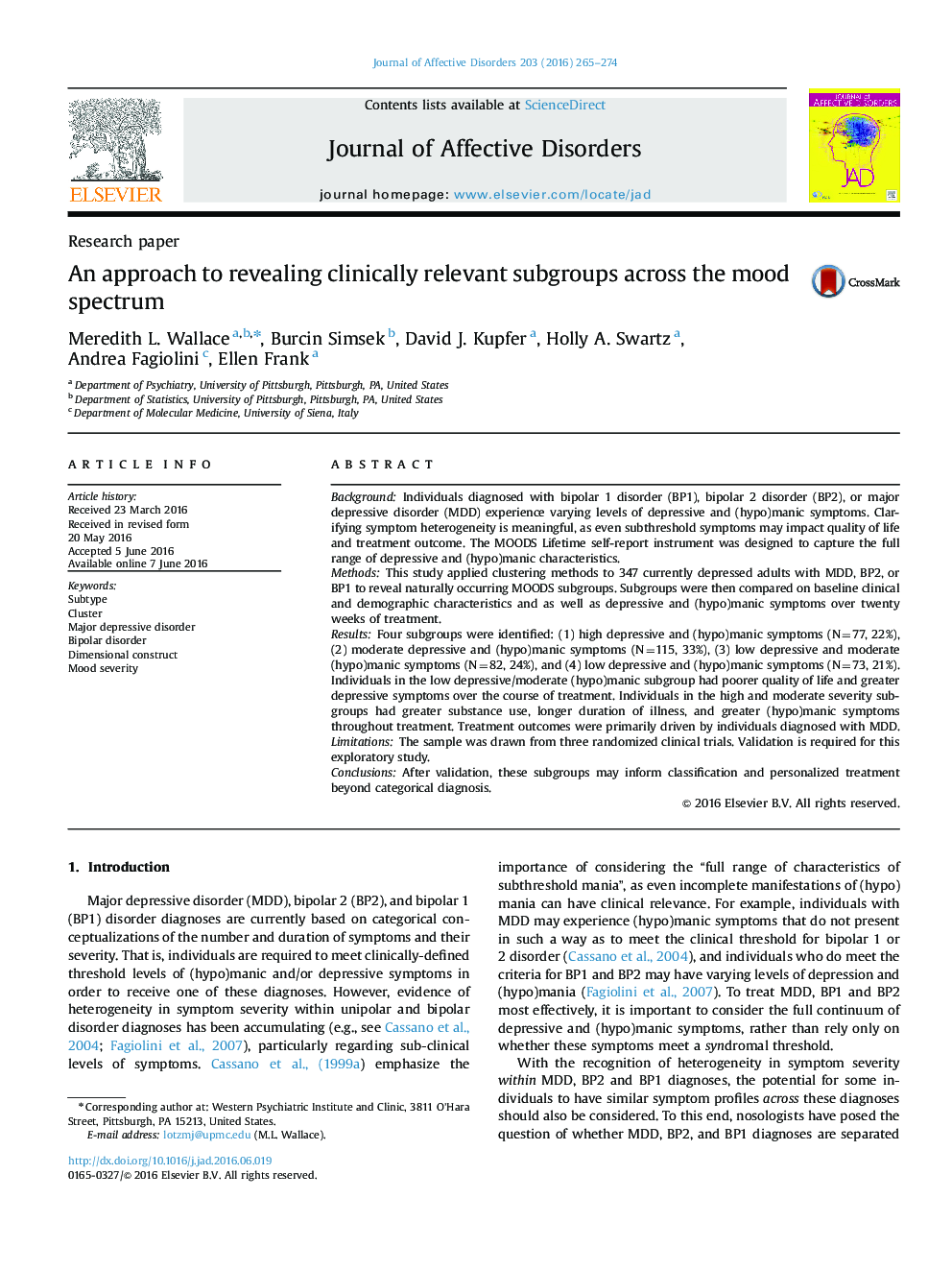| کد مقاله | کد نشریه | سال انتشار | مقاله انگلیسی | نسخه تمام متن |
|---|---|---|---|---|
| 6229888 | 1608122 | 2016 | 10 صفحه PDF | دانلود رایگان |
- Depressive and (hypo)manic symptom heterogeneity exists across MDD, BP1, and BP2.
- Identified four subgroups based on lifetime depressive and (hypo)manic symptoms.
- Subgroup was associated with treatment outcome and quality of life.
- Some adults with MDD had lifetime symptoms similar to those with BP1 or BP2.
BackgroundIndividuals diagnosed with bipolar 1 disorder (BP1), bipolar 2 disorder (BP2), or major depressive disorder (MDD) experience varying levels of depressive and (hypo)manic symptoms. Clarifying symptom heterogeneity is meaningful, as even subthreshold symptoms may impact quality of life and treatment outcome. The MOODS Lifetime self-report instrument was designed to capture the full range of depressive and (hypo)manic characteristics.MethodsThis study applied clustering methods to 347 currently depressed adults with MDD, BP2, or BP1 to reveal naturally occurring MOODS subgroups. Subgroups were then compared on baseline clinical and demographic characteristics and as well as depressive and (hypo)manic symptoms over twenty weeks of treatment.ResultsFour subgroups were identified: (1) high depressive and (hypo)manic symptoms (N=77, 22%), (2) moderate depressive and (hypo)manic symptoms (N=115, 33%), (3) low depressive and moderate (hypo)manic symptoms (N=82, 24%), and (4) low depressive and (hypo)manic symptoms (N=73, 21%). Individuals in the low depressive/moderate (hypo)manic subgroup had poorer quality of life and greater depressive symptoms over the course of treatment. Individuals in the high and moderate severity subgroups had greater substance use, longer duration of illness, and greater (hypo)manic symptoms throughout treatment. Treatment outcomes were primarily driven by individuals diagnosed with MDD.LimitationsThe sample was drawn from three randomized clinical trials. Validation is required for this exploratory study.ConclusionsAfter validation, these subgroups may inform classification and personalized treatment beyond categorical diagnosis.
Journal: Journal of Affective Disorders - Volume 203, October 2016, Pages 265-274
